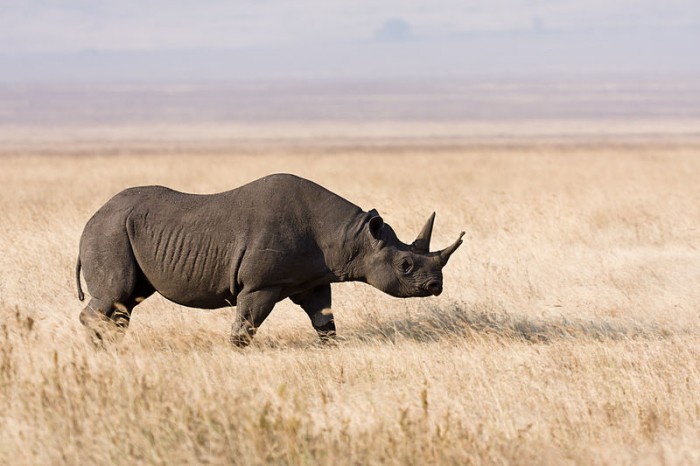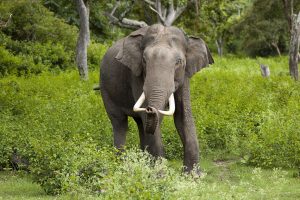Natural Disasters Pose Threat to Rare Rhinos
The world’s only population of critically endangered Javan rhinos could go extinct in the future due to natural disasters such as earthquakes and tsunamis. Scientists are urging the establishment of secure populations and increasing the existing population in Ujung Kulan National Park.
 Image: By Ikiwaner (Own work) [GFDL 1.2 (http://www.gnu.org/licenses/old-licenses/fdl-1.2.html)], via Wikimedia Commons
Image: By Ikiwaner (Own work) [GFDL 1.2 (http://www.gnu.org/licenses/old-licenses/fdl-1.2.html)], via Wikimedia Commons The world’s only remaining population of Javan rhinoceros, living in the Ujung Kulon National Park, is under threat from poaching. A new study in Conservation Letters has also discovered that they could go extinct in the future due to natural disasters, including volcanic eruptions and tsunamis. The team of international researchers who worked on the study are now urging the establishment of secure populations of the critically endangered species.
Javan rhinos live within sight of volcanic Mount Krakatoa and close to the Indonesian Sunda Arc, which is an area of converging tectonic plates that commonly cause earthquakes, triggering tsunamis. In 2013, the global population of Javan rhinos was 62 animals – likely near the site’s current capacity. A tsunami as high as 10 metres (around 33 feet) could threaten 80% of the area in the national park that has the highest density of rhinos. Unfortunately, a tsunami that high is projected to occur within the next 100 years. Therefore the authors of the study recommend the establishment of additional rhino populations away from the reach of natural disasters.
This would require identifying and securing new sites, agreement from stakeholders including local authorities and the public, and intensive monitoring in the national park to determine which individual rhinos may be suitable for translocation. “What we found in this study provides good momentum for our efforts to save the Javan rhino, considering that we are racing against time,” said Arnold Sitompul, conservation director of World Wildlife Fund-Indonesia. Brian Gerber, postdoctoral fellow at Colorado State University and corresponding author of the study, said that the science shows the need for additional rhino populations to safeguard the species. “The Javan rhino is the most endangered land mammal in the world,” he said. “Now, we need the social and political will to move things forward and establish additional populations.”
The study used camera traps to provide a detailed analysis of the Javan rhino population. The researchers obtained 1,660 images of rhinos from 178 camera trap locations in 2013 to produce their population estimate of 62 individuals. This compares with an estimate of 25 animals in 1937.
The authors also emphasise the importance of taking conservation actions that can help increase the Ujung Kulon National Park’s small rhino population, improving the survival odds for at least part of the population in case of a natural disaster. This includes maintaining the strict protection of the remaining rhinos, continuing the rhino monitoring work and scaling up ongoing habitat management. Specifically, this would mean controlling Arenga palm, which shades out the forest floor and inhibits the growth of plants that the rhinos consume.
“We are proud of the achievements of successful management to boost the Javan rhino population, as revealed in this study,” said Ujang Mamat Rahmat, head of Ujung Kulon National Park. “We also have conducted some studies on prospective areas for second habitat, and in the meantime, we will continue to work to improve the security patrols and increase carry capacity through invasive species control.”





No comments yet.